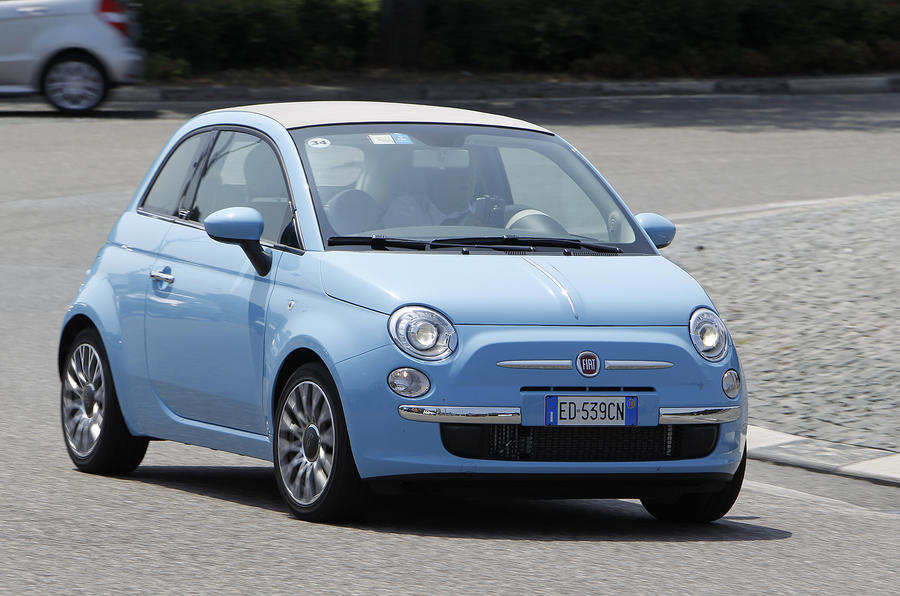What is it?
It is right, in this era of rising economy consciousness, that the Fiat 500 should be the first among Europe’s modern small cars to feature a bespoke twin cylinder engine, and thus to reap improvements up to 30 percent in low fuel consumption and CO2 output.
The company has always had the courage to use radical technical solutions first, and the 500 has two-cylinder heritage, too: its ancestors have often featured low-priced twin-cylinder variants.
However, this new super-economical TwinAir is different in one key respect. This time, two cylinders don’t mean lower prices. When the 500 Twinair hits the market this September its price will be similar to that of the present 99bhp 1.4-litre version, pitched around £1400 above the entry-level 1.2 litre petrol four.
Fiat's argument is that TwinAir is packed with technology, and brings spectacular economy. It delivers similar performance to the 1.4 (a top speed of 108 mph and a 0-62 mph time of 11.0 seconds) with an amazing 30 per cent economy improvement.
Its tiny engine features the MultiAir electro-hydraulic valve propulsion system the company has been rolling out with other engines, which cuts pumping losses and improves efficiency by around 10 percent. Maintenance is low: TwinAir has both hydraulic tappets and long-life spark plugs, so ordinary servicing should be cheap.
The 500 TwinAir also features a standard stop-start system. What is more, its tiny internals cut friction to new lows, and its tiny turbo allows quick throttle response and practically eliminates turbo lag. It also promotes low-end torque, which amounts to an impressive 107lb ft at 1900rpm. Even more amazing is the fact that it produces fully 25 per cent more torque at that speed than the 1.4-litre.
This, surely, is the way of the future.
What’s it like
To put TwinAir’s achievements into perspective, Fiat engine guru Paolo Martinelli explains that a suite of engine improvements over the past 15 years have delivered about a 15 per cent average cut in European cars' CO2 outputs.
The new TwinAir offers the same improvement again – in just one step. Eventually, the TwinAir will be come in three power levels: 64bhp, today's 84bhp and a 104bhp variant. Together, they could replace the entire 500/Panda engine range, though Fiat doesn't suggest they will. But it does say production at the Polish manufacturing plant will hit 400,000 units, very soon.
As well as being 23 per cent shorter than a normal four, this tiny 900cc, eight-valve, turbocharged parallel twin (which features a balance shaft to damp the first order vibration) is 7kg lighter than Fiat's current 1.2-litre non-turbo FIRE four, and 13kg lighter than the 1.4-litre. It is, in effect, a briefcase-sized powerhouse, which drives through the owner’s choice of either a five-speed manual gearbox or Fiat's two-pedal semi-automatic gearbox, called Dualogic. Ours was a manual.
On the road, the 500 TwinAir is deeply impressive. Only at idle and under full acceleration are you truly aware of the engine's twin-cylinder format, and even then the noise is gruffly enjoyable and the balancer shaft keeps things four-cylinder smooth. We were able to cruise quietly at 90mph, more conscious of wind than engine noise, though other testers complained of a 'drone' which suggests some variability among early-build cars.























Join the debate
Add your comment
Re: Longer term test?
basically autocar wont put their own money into long termers to either buy or lease so instead rely on pet makers supplying top spec cars for them to lounge around in......hence the usual bias towards friendly firms such as ford and merc......without their charity the journo's wouldnt have a car to pootle about in and they much prefer a nice merc on their private drive to inpress the neighbours than a fiat 500.(more fool them)
Longer term test?
Has any magazine actually got one of these on long term test? Or would any owners care to report? It would be interesting to find out what the real world fuel consumption figures are. Most magazine reviews have either regurgitated the official economy figures or not been able to achieve anything remotely close to the official figures and have said that a longer term test is needed .. yet not one of them actually will do one. These same magazines are however quite happy to long term test cars that are more relevant to everyday motoring folk like BMW M3s or Jaguar XJs ??!!?
Re: Fiat 500 TwinAir